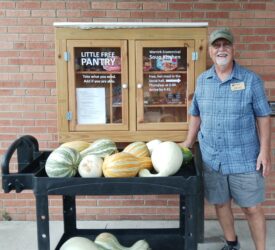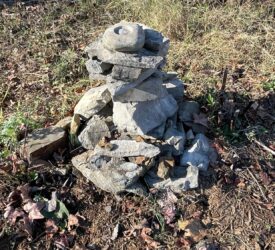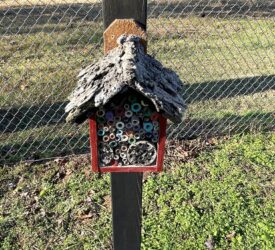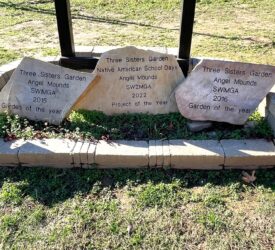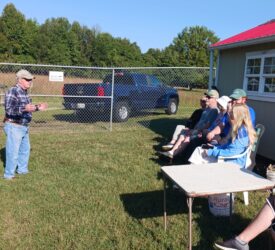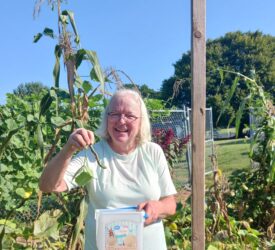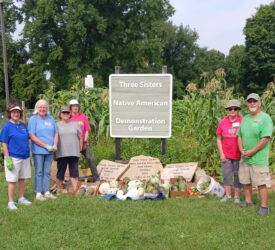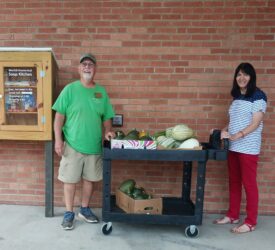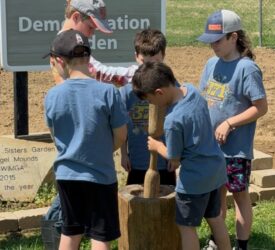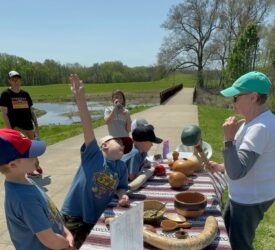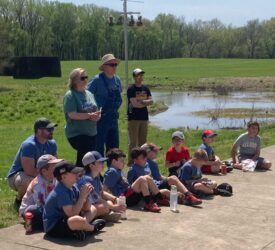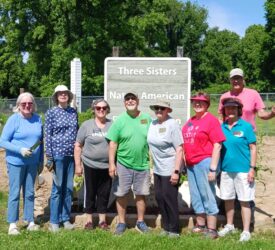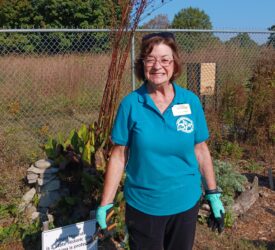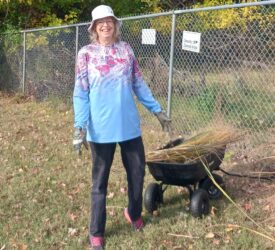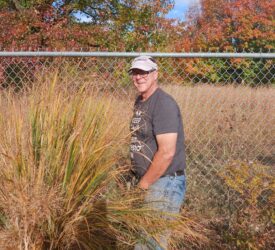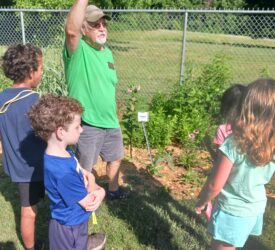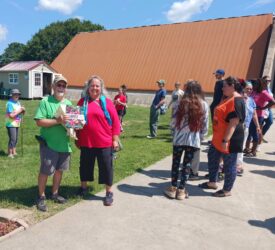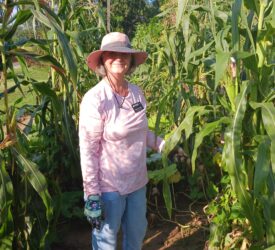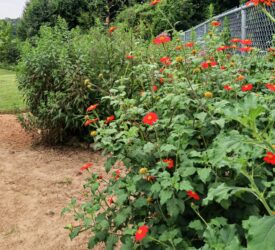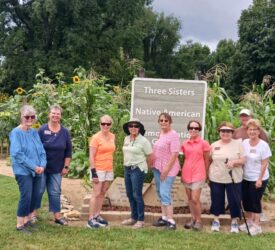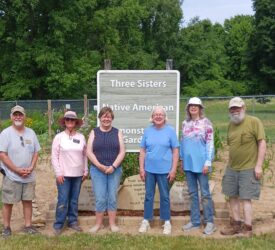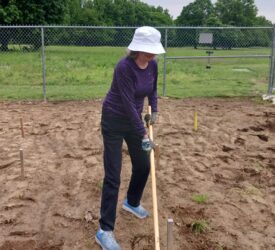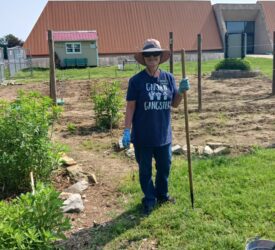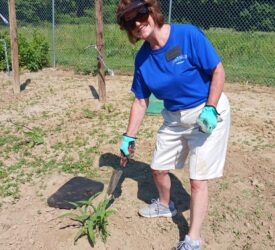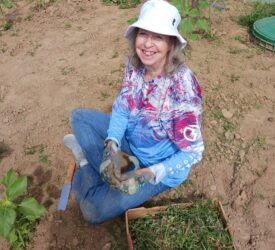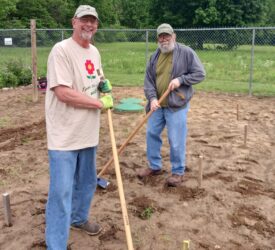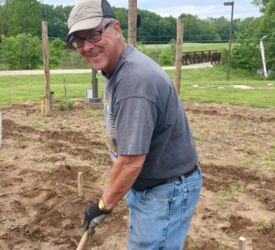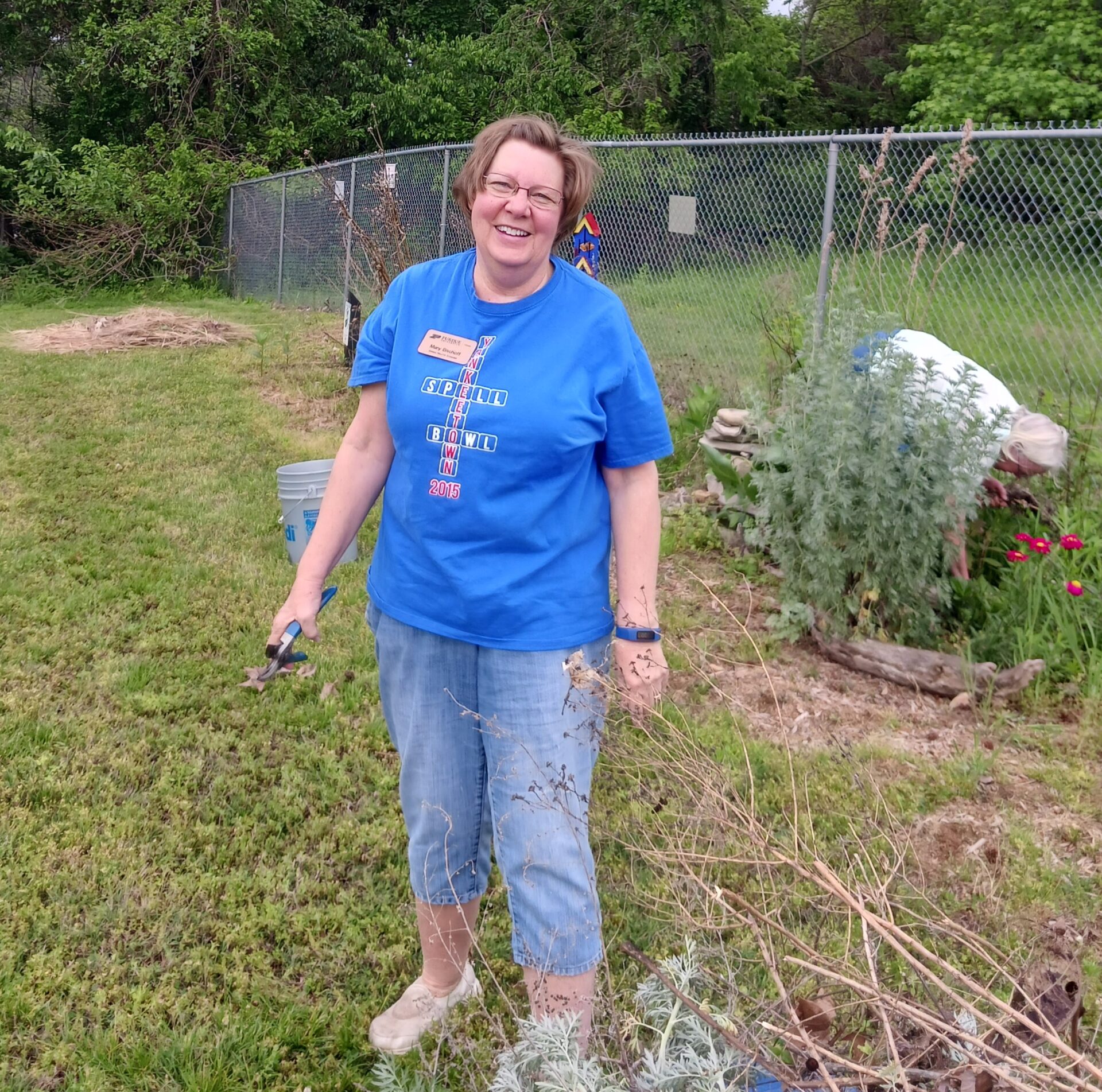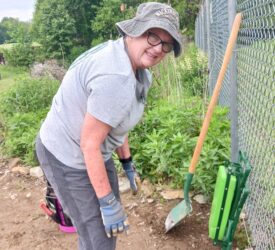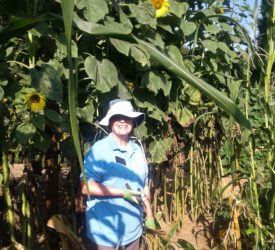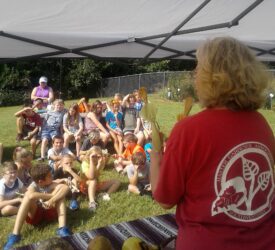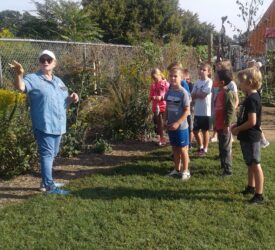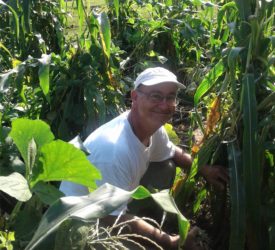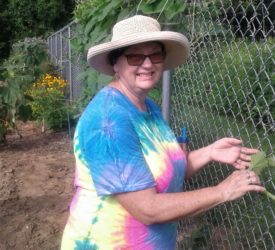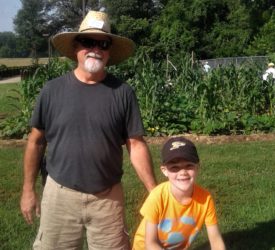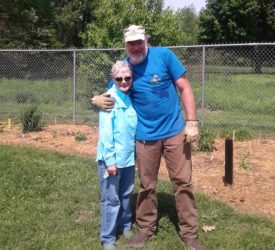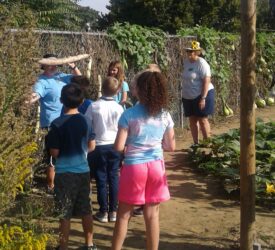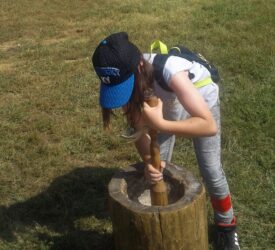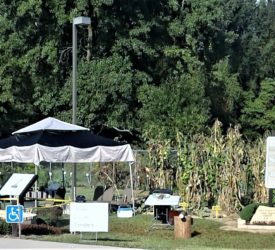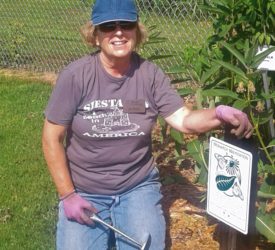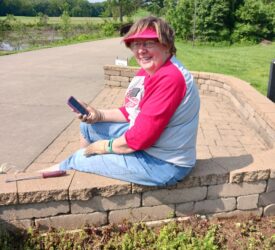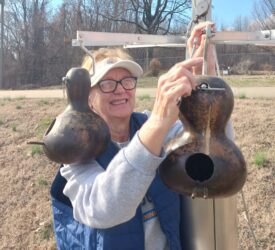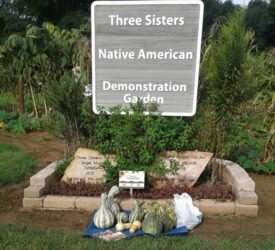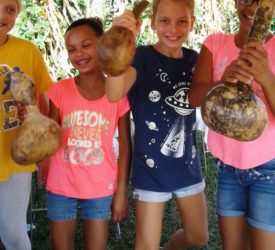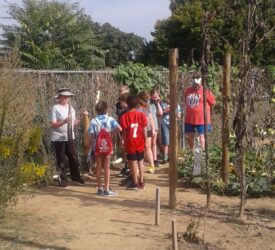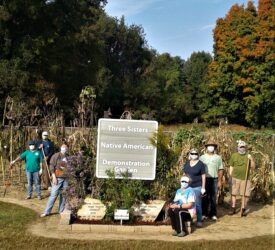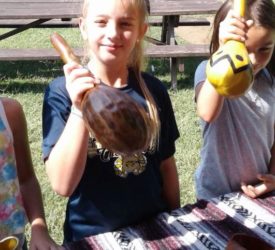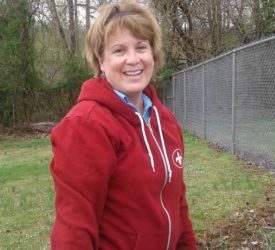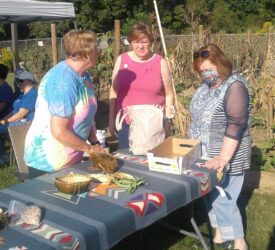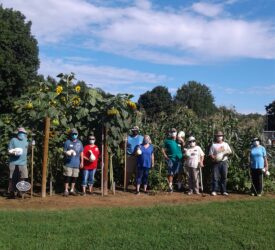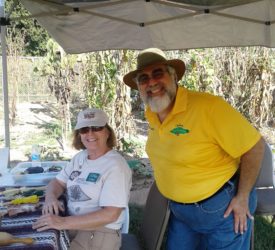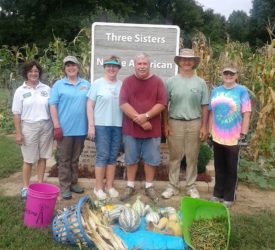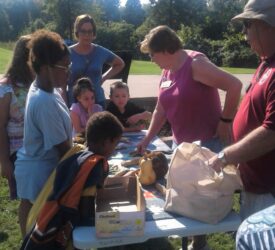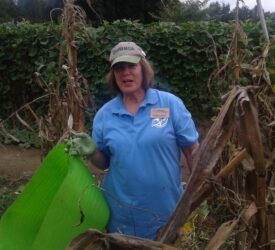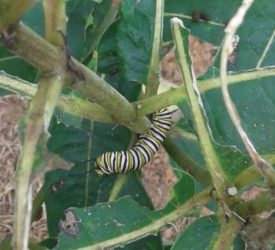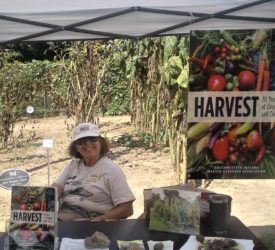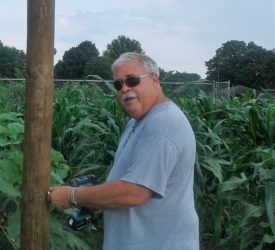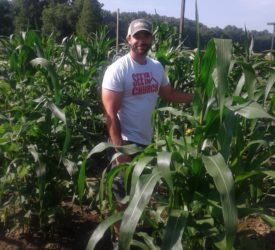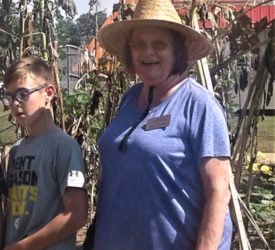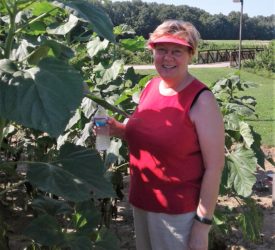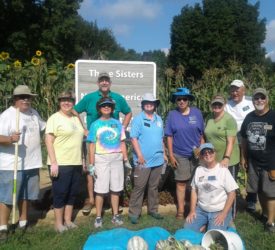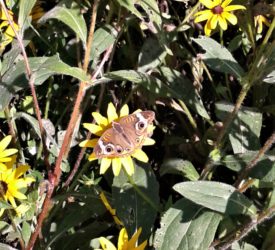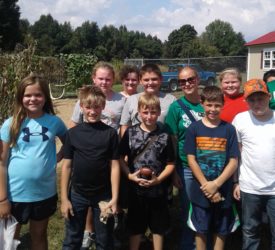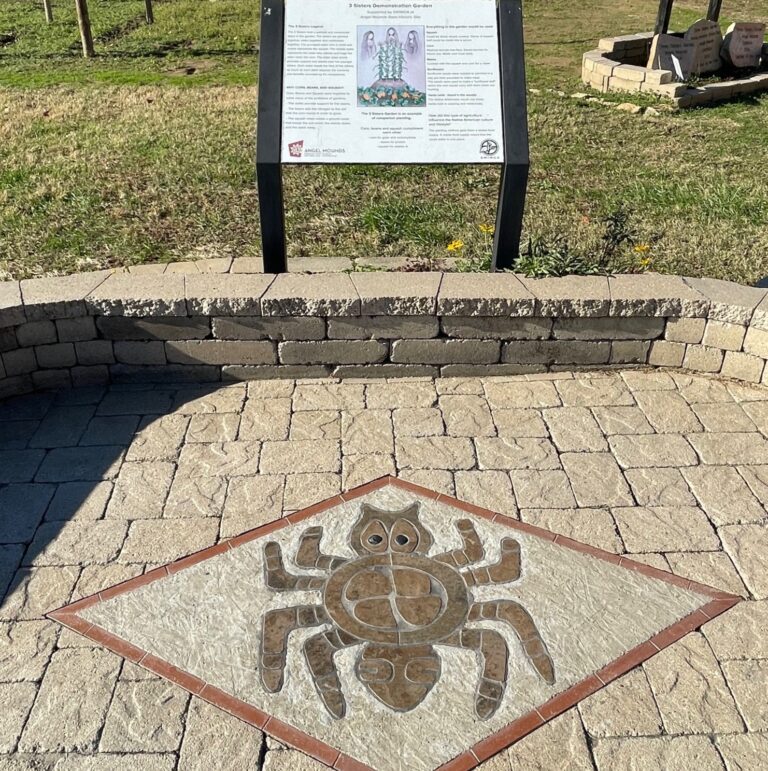 Three Sisters Demonstration Garden
Three Sisters Demonstration GardenThe Master Gardeners planted and maintain a Three Sisters Garden at the Angel Mounds State Historic Site. A Three Sisters Garden consists of corn, climbing beans and some type of gourd (squash, pumpkin, melon) that are interplanted. This garden is the most popular example of companion planting, and has been employed by Native Americans since before Europeans arrived on this continent.
To begin our description of the “Three Sisters” garden, we must first travel back in time over a thousand years ago. The Mississippians, a prehistoric Indian culture, began to settle and build communities around water tributaries. They settled in these areas because corn (maze) had become part of their subsistence diet. They planted large areas of corn in the rich bottomland soil. It was a crop that was easy to raise, store and trade. These sites, dominated by male chieftains were centers for trade, politics, religion and sporting events. Angel Mounds (constructed between AD 1000-1450) was one of these sites with a population of more than 1000 people.
At first, the Mississippians only planted corn and squash together. Later they added beans and these crops became the “Three Sisters” garden of today. This method of planting spread to all the Native American sites. Every modern tribe in North and Central America plant a version of the “Three Sisters” and created a legend that is associated with this method of gardening. The Mississippians became the first horticulturists/farmers in North America. Although they had no written language, they used legends and oral stories to pass on these procedures and techniques to modern man.
Corn, beans and squash planted together on a small mound is a productive and compact method of producing food. These three plants planted together became the first companion garden. The beans provide nitrogen for the corn and the corn provides a pole for the beans to climb. The squash’s broad leaves help maintain moisture in the soil and its prickly vines help keep insects out. The three also provide protein, starches, and vitamins necessary to support a balanced diet. Our friends at the IU Glenn Black lab have also identified other plants that were cultivated at the Angel location — sunflowers, gourds, tobacco and quinoa.
The Native Americans would have foraged for flowers and herbs, and the Angel Mounds Demonstration Garden includes some of those herbs and native plants. Herbs were traditionally used for dyes, medicine, food, and ceremonies. Plants such as the Painted Daisy, Mexican Sunflower and Coneflower were used as paint. Bee Balm, Yarrow, and Mint were used to treat headaches, sore throats, colds, relieve stomach ailments, and stop blood flow from wounds. Sunflowers were used for food, oil, bait and paint. Tickseed leaves and young shoots were cooked as a vegetable. The raised beds feature peppers, tomatoes, beans, turnups, squash, peas, lettuce and a mini-three sisters garden.
The Three Sisters Master Gardeners have also erected eight thick-walled gourd houses for Purple Martins. MG Steve Rose, a birder, has been tracking the Purple Martin migration routes. The birds will be migrating to the Mid-west from Florida between March 15 and April 15. The purple Martin is the largest swallow in North America. Purple Martins are not truly purple. Light causes their dark blackish feathers to have a bright blue or deep purple appearance.
JANUARY 2025 UPDATE: Our volunteers turned the soil, fertilized, planted, weeded, watered, and helped to educate. We had a wonderful 2024 harvesting a total of 662.5 pounds of beans, squash, and corn, with an additional 67 pounds of gourds. The harvest was donated to The Warrick County Ecumenical Soup Kitchen at St. Clement’s Church in Boonville, IN.
APRIL 2024 UPDATE: On April 13 volunteers planned to host Boy Scouts at the Three Sisters Garden, teaching them the legend of the Three Sisters and letting them experience making mounds and planting a row of corn.
OCTOBER 2023 UPDATE: As of late September, 377 pounds of produce had been harvested and donated to the Warrick County Ecumenical Soup Kitchen in Boonville. Tom and Jan Wiggers are the new co-chairs of the Glenn Black Historical Home Garden — the vision of Angel Mounds Director, Mike Linderman, is to restore the gardens to what they were “visually” in the 1940’s and 1950’s when the Blacks lived there. October is a time of harvest and festivals.
SEPTEMBER 2o23 UPDATE: On August 7 the Warrick MG group attended a class and garden tour of the Three Sisters Garden at Angel Mounds. In a remarkable first harvest the Welcome Home volunteers gathered 145 pounds of produce, all of which was donated to the Warrick County Ecumenical Soup Kitchen at St. Clements Church, Boonville.
AUGUST 2023 UPDATE: Volunteers enjoyed teaching and working with the following groups the summer of 2023: • June 6 – Three Sisters presentation at Patchwork Central • June 21 – Class for Angel Mound’s summer camp kids. • July 14 – Class and Garden tour at Three Sisters Garden for Urban Seeds, EVPL, and Professor Robin Wall Kimmerer. Urban Seeds brought both adults and students to learn more native plants and herbs.

